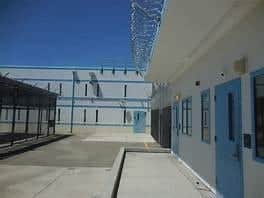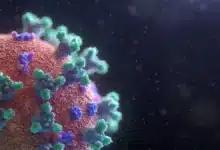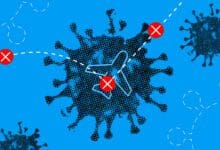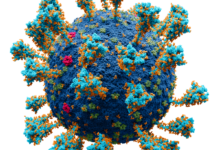COVID-19 Response Inside California’s Division of Juvenile Justice
If DDJ´s inability to handle the 2019 Legionella outbreak at Chad is any indication, there is a lot to be alarmed with the current COVID-19 response
Since the arrival of COVID-19, friends and family have asked if I know how the Division of Juvenile Justice (DJJ) is handling the virus. While I do not know their specific handling of COVID-19, based on their mishandling of previous crises, I have a strong idea. For the record, I taught Social Studies at DJJ’s N.A. Chaderjian facility, known as Chad, in Stockton, California for a duration of 4 years.
Though I no longer work at Chad, fielding these questions provoked my curiosity as to how DJJ is dealing with COVID-19; I am certain that some of my former students are still being warehoused there. My research began by reading the Witness LA article by Celeste Fremon where she reports the initial four COVID-19 cases inside DJJ, on June 25, 2020. Since the publishing of Fremon’s article, less than a month later on July 23, 2020, DJJ reported 25 cases — a huge increase within a short time span, given that lockdown facilities are a controlled environment. Four days later, on July 27, 2020, DJJ reported 45 cases and by Friday, July 31, 64 confirmed cases. As the national death toll continues to increase, DJJ’s COVID-19s exponential growth is testimony to its inability to effectively respond to a crisis.
As of March 24, 2020, per Governor Newsom’s executive order, the state’s Division of Juvenile Justice (DJJ), stopped accepting new county intakes in order to prevent COVID-19 inside its facilities. But in late May or early June, DJJ returned to business as usual and began receiving new intakes. Soon thereafter DJJ announced their first COVID-19 case. Returning to business as usual was a blatant disregard for what has become an exponential growth in COVID-19 cases — a living nightmare for the families and loved ones.
In response to the COVID-19 cases inside adult prisons, on March 26, 2020, Ralph Diaz, the Secretary of CDCR, via a recorded video message intended for all inmates across the state, disclosed, “I am well aware that the COVID-19 virus didn’t begin inside of the institution, it came from outside.”
The DJJ, like all other government institutions, had the liberty to develop and implement a relevant strategy against COVID-19. Based on the exponential surge in cases, having the independence to design their own strategy demonstrates their inability to be innovative. I suspect that the two biggest obstacles to effectively manage the COVID-19 outbreak can be attributed to DJJ’s culture of the unmistakable pattern “this is how we do things around here” approach to incarceration and the undeniable high percentage of Trump supporters who believe in alternative facts and follow fake news outlets such as Breitbart. During my four years of employment with DJJ, I witnessed several incidents that share strong parallels with COVID-19, the Legionella outbreak was the biggest of them all.
Legionella at Chad
In late March of 2019, DJJ dealt with a different potential health catastrophe at the adjacent adult prison, California Health Care Facility (CHCF), where a Legionella bacteria outbreak killed an inmate. According to a KQED article, traces of the Legionella bacteria were also found at both of the state’s adjacent juvenile prisons — O.H. Close and Chad. I was in my fourth year of teaching at Chad and experienced the Legionella response first hand.

Around early April of 2019, I was crossing Chad’s prison yard on my way to the Merced living unit school area, when I heard jovial voices in the Kern Unit recreation yard. I turned to look for a familiar face, as the youth normally ran up to the fence to say hello. Instead, I saw something unusual, approximately 10 to 15 guys were inside the dog-run cage (approximately 300 square feet) that sits in the Kern recreation yard, with potentially contaminated water streaming down from the gutter, indiscriminately splashing everywhere. Ironically, the guys were placed in the cage for security reasons, while the work crew attempted to resolve the Legionella bacteria in that particular living unit.
The guys in the cage knew of the potential Legionella bacteria in the water; due to the outbreak they spent some days without showering, followed by a few days of taking birdbaths with bottled water, followed by showers with filters that regularly broke. In response to the potentially contaminated water, I heard staff dismiss the risk/danger by saying:
“It only affects old people.”
“They’re fine, they’d have to inhale the vapors to catch Legionella.”
“They made choices that brought them here, now they need to pay whatever the price may be.”
“If they’d behave on the streets, they wouldn’t have to worry about Legionella in their water.”
At that moment, with water splashing on the recreation yard and running into the cage, all that the guys could do was tease each other and laugh. As I witnessed this scene, a mental health specialist was also walking by and observed the same. We shook our heads in disbelief, and she said a common statement regularly whispered by staff, “One day they’re going to shut us down for stuff like this!”
Seeing guys caged in the dog-run while potentially contaminated water splashed everywhere was no surprise based on what I observed earlier that morning. I was teaching a class when I heard the stream of water splash on the patio from a gutter nearby. The splashing water captured everyone’s attention and at some point everyone inside my classroom looked out the window to observe. I witnessed some people tiptoe and others make no effort to avoid full contact with the stream of water. A staff member walked into my class with the sole of his shoes wet, and I could not stop wondering if he was spreading the bacteria. One of the students eventually commented, “This place doesn’t give a F*#! about us” — as the potentially contaminated water splashed 5 feet away from the classroom door, where he stood, was plenty of evidence.
Earlier that morning, in front of a living unit, I saw a maintenance crew working to address the bacteria via the sewer line. The crew struggled to identify the exact location of the water/sewer lines, the blueprints did not coincide with what they discovered. My curiosity about their work prompted a brief conversation. During our exchange, I understood the problem could be largely attributed to a poorly built facility; this created a contemporary problem whenever something needed to be fixed.
Administration’s Approach to Handling Emergencies
Central to all prison operations is a rigid top-down, quasi-military style way of thinking, in which knowledge and ideas are not fluid. The DJJ is no exception. In general, staff are scared to speak up for fear of retaliation and regularly go with the flow to avoid confrontation. It’s messy, but the pension is worth the pain. Most DJJ administrators are homegrown and have minimal to no external experience; the majority of the current administrators climbed the ranks under the training and guidelines of the notorious California Youth Authority (CYA) — changing the name to DJJ was part of moving away from abusive practices. But having CYA trained administrators operating DJJ creates major tension, as their decisions are based on old ideas which they consider to be “common sense” for a lockdown facility — such as believing that placing a shackled teenager inside the dog-run cage should count as rehabilitation — because he is bound to learn his lesson. I witnessed this firsthand.
With a track record of covering up major incidents, DJJ is being tested on a completely different level since COVID-19 cases cannot be hidden in data reports. I previously wrote an article on DJJ’s secrets of data collection. In a numbers game, the possibility of someone contracting COVID-19 is greater with staff than juveniles. Technically, the juveniles are already quarantined and it’s the staff who are exposed to the world. While the Legionella water crisis was conveniently solved with tons of water bottles, COVID-19 is unlike anything DJJ, or nation, has dealt with in our lifetime. As the death toll continues to increase across the nation, DJJ’s response team has its hands full.
During my four years of employment, DJJ had several Directors at its helm, as did Chad. People commonly assume these leadership positions a year or two away from retirement as a means to enlarge their pension check — one of several strategies to “spike” the pension. This strategy has worked for the retirees but their easy money has been a detriment of Chad; no one sticks around to deal with the consequences of their failed leadership. When it’s all said and done, they play with taxpayer money and someone else’s kids. Currently, with COVID-19, DJJ has the perfect recipe for disaster and I would not be surprised to see people jump ship before it sinks, ala Costa Concordia. Under COVID-19, traditionally accepted unethical behavior, deemed business as usual, could reach a new low if a state-custody ward were to die.
While teaching at Chad, the facility was practically half empty, as were the other DJJ facilities; several living units were closed due to a shortage of youth — a testament to a decline in juvenile crime. Given the emerging COVID-19 revelations, this shortage of youth provides the space for DJJ to create a safe social distancing environment. Of course, this would require some political will, out of the box leadership, and possibly more funds.
Between a Financial Rock and a Hard Place
Across the state, family visits inside detention facilities are temporarily banned to prevent the spread of COVID-19. At DJJ facilities, banning family would be a great prevention mechanism if no one else entered or left the facility, and all programming was modified as well. The reality is otherwise — three major shift changes occur and in this numbers game, any staff can be asymptomatic. According to a World Health Organization (WHO) spokesperson, Maria Van Kerkhove, between 6 and 41 percent of the population may be asymptomatic. Given the novelty of COVID-19, little is known about asymptomatic cases since people only get tested when they experience symptoms. In spite of this uncertainty, unlike adult prisons, early releases are not a topic of discussion at the DJJ.
For financial reasons the DJJ cannot afford any early releases, since it is faced with a declining population. This is true statewide; as mentioned earlier, juvenile crime is down and a lot less youth are being incarcerated. Due to a decrease in arrests and thus far guards have not been pink-slipped (the way public school teachers regularly do), state taxpayers are dishing out approximately $300,000 per year per youth, according to a scathing CJCJ report that was published in February of 2019.
While COVID-19 has forced many law enforcement officials to curb their arrests, county facilities have released low-risk offenders, and CDCR is scheduled to release over 10,000 adult inmates. The DJJ officials are clearly convinced that they cannot afford (literally) to send anyone home on an early release, not even those who are behaving well and are scheduled to be freed within the next six months.
From this angle, it is not profitable to proactively address a COVID-19 prevention plan that would include permanently not admitting new inmates into DJJ (until a COVID-19 vaccine is available) and releasing those on good behavior as well as anyone who is considered a predisposed high-risk health case — I met a lot of youth inside Chad who suffered from asthma and or depended on an array of medication.
A Case for Medical Assistance in DJJ
This health-related global crisis only gets worse when one asks the youth about the protocol for receiving medical services. In February of 2019, The Huffington Post shared the interview of a young man who spent 3 years at Chad. This young man is physically paralyzed from the waist down and “ . . . described later being forced from that ADA-compliant room into an inaccessible facility alongside able-bodied youths, where he suffered falls and struggled just to bathe and get dressed in the morning.” After self-advocating, the young man was returned to the ADA-compliant room and became subjected to, “… routinely harassed by staff, who spewed racist and ableist epithets, and subjected him to random room searches and the use of isolation as punishment for initially refusing to leave his ADA-compliant dorm.” While the young man does not say, one must wonder why Chad administration would bypass the Chief Medical Doctor and remove him from an ADA compliant room. This insight on who makes medical decisions should raise concerns about the COVID-19 cases, given that medical staff are an intricate component and security should not have the ultimate say.
In my experience with students who were ill, it was not uncommon for them to attend class while sick. In order to see a doctor, the youth must fill out and submit a request form. Due to the rigid security protocols, until the youth is called-in to see the doctor, they must attend school and are written-up for sleeping-in if the doctor has not cleared the patient. During this pandemic, this rigid approach to managing a juvenile prison, disguised as tough love, exacerbates the crisis given how highly contagious COVID-19 is.
To complicate matters, during the winter Chad youth are not provided with adequate clothing to endure the cold weather of the Northern Central Valley region. I recall having students arrive to class soaked in water because they are not assigned umbrellas or waterproof winter gear; their pants, made of thin khaki-like material worn during the summer, are what they wear during the winter. It’s quite the contrast to see staff bundle themselves in layers of clothing to combat the low temperatures, while the students arrive to class shaking in soaked cotton sweaters or non-waterproof jackets. This is important to consider, given that we are a couple of months away from the fall season, cooler weather, flu season, and have 65 confirmed COVID-19 cases that exemplify exponential growth inside DJJ.
Conclusion
In October of 2019, seven months after CDCR and DJJ’s south Stockton facilities were first plagued with Legionella, according to the Sacramento Bee, the bacteria had already cost taxpayers 8.5 billion dollars with no trace of it disappearing. As of January 16, 2020, the Sacramento Bee reported that the bacteria persisted, and CDCR planned to hire 15 new staff and spend 4.4 million per year to combat Legionella. Given the exponential growth in COVID-19 cases, I am now left to wonder where Chad, DJJ, and CDCR as a whole will be in seven months if state legislators do not intervene. Unlike the Legionella water crisis, COVID-19 can exponentially grow to catastrophic levels. As a result, the true rock and hard place scenario that DJJ finds itself in is whether to continue with business as usual or pursue ethical alternatives given the unprecedented severity of the situation and the lives at risk.
This article was originally published in Medium.




This author appears to follow a pattern in-which dramatic narratives are created around allege incidences that if they occured, were likely not the result of direct experience. Inevitably he becomes the subject of such tales — either promoting himself as an exceptionally gifted educator, and/or portraying himself as a victim of the social injustice he claims to be fighting. There is nothing revelatory in the information presented in these writings, nor is there any insight into the student population he claims to understand.